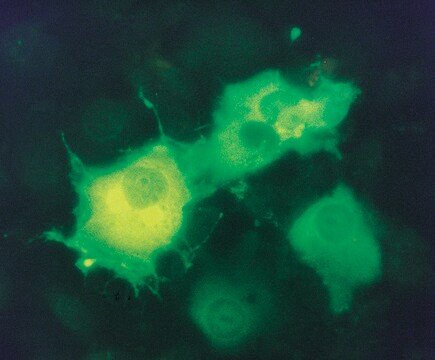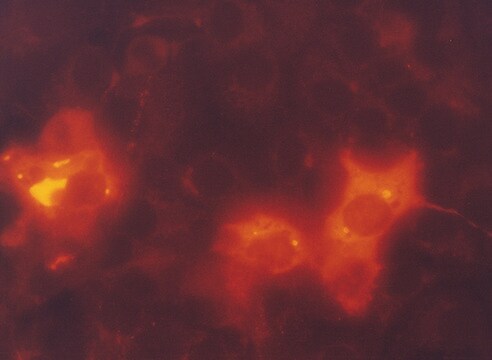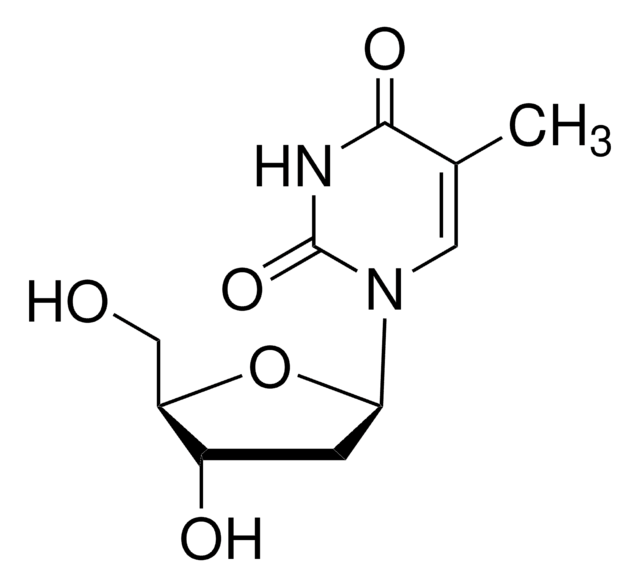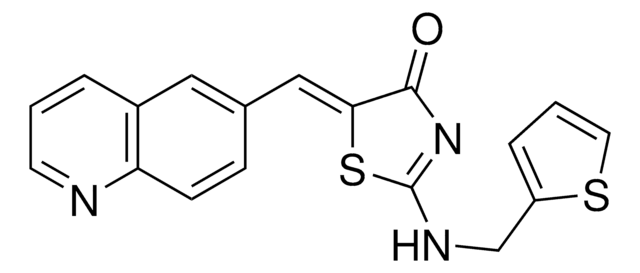C4710
Monoclonal Anti-Cyclin A antibody produced in mouse
clone CY-A1, ascites fluid
Sign Into View Organizational & Contract Pricing
All Photos(4)
About This Item
Recommended Products
biological source
mouse
Quality Level
conjugate
unconjugated
antibody form
ascites fluid
antibody product type
primary antibodies
clone
CY-A1, monoclonal
mol wt
antigen 60 kDa
contains
15 mM sodium azide
species reactivity
mouse, human, monkey, bovine
technique(s)
immunocytochemistry: suitable
microarray: suitable
western blot: 1:1,000 using a mouse NIH 3T3 cell extract
isotype
IgG2a
UniProt accession no.
shipped in
dry ice
storage temp.
−20°C
target post-translational modification
unmodified
Gene Information
human ... CCNA2(890)
mouse ... Ccna2(12428)
General description
Cyclin A is a nuclear protein during S phase and it binds both cdk2 and cdc2. The availability of monoclonal antibody reacting specifically with cyclin A enables the subcellular detection and localization of cyclin A and the measurement of relative differences in cyclin A levels as a function of cell cycle phase.
Specificity
The antibody recognizes an epitope present in amino acids 162-433 of bovine cyclin A. No cross-reactivity is detected with other cyclins (cyclin B, D, or E).
Immunogen
recombinant bovine cyclin A.
Application
Monoclonal Anti-Cyclin A antibody produced in mouse is suitable for:
- immunocytochemistry
- microarray
- western blotting at a dilution of 1:1,000 using a mouse NIH 3T3 cell extract
Disclaimer
Unless otherwise stated in our catalog or other company documentation accompanying the product(s), our products are intended for research use only and are not to be used for any other purpose, which includes but is not limited to, unauthorized commercial uses, in vitro diagnostic uses, ex vivo or in vivo therapeutic uses or any type of consumption or application to humans or animals.
Not finding the right product?
Try our Product Selector Tool.
recommended
Product No.
Description
Pricing
Storage Class Code
10 - Combustible liquids
WGK
nwg
Flash Point(F)
Not applicable
Flash Point(C)
Not applicable
Choose from one of the most recent versions:
Already Own This Product?
Find documentation for the products that you have recently purchased in the Document Library.
Chiung-Yueh Hsu et al.
Journal of virology, 81(1), 384-394 (2006-10-13)
The papillomavirus E1 protein is essential for the initiation of viral replication. We previously showed that the bovine papillomavirus E1 protein is unstable and becomes resistant to ubiquitin-mediated degradation when tightly bound to cyclin E-cyclin-dependent kinase 2 (Cdk2) before the
Jason M Bodily et al.
Journal of virology, 85(17), 8852-8862 (2011-06-24)
Human papillomaviruses (HPVs) are the causative agents of several important genital and other mucosal cancers. The HPV16 E7 gene encodes a viral oncogene that is necessary for the continued growth of cancer cells, but its role in the normal, differentiation-dependent
Chunyan Weng et al.
International journal of oncology, 42(1), 327-337 (2012-11-09)
Androgen deprivation therapy of prostate cancer with estrogens shows significant cardiovascular side-effects. To develop effective prostate cancer therapeutic agent(s) with minimal cardiovascular side-effects, we compared the effects of various estrogen receptor (ER) ligands on the modulation of dihydrotestosterone (DHT) actions
Matthew Hoare et al.
Nature cell biology, 18(9), 979-992 (2016-08-16)
Senescence, a persistent form of cell-cycle arrest, is often associated with a diverse secretome, which provides complex functionality for senescent cells within the tissue microenvironment. We show that oncogene-induced senescence is accompanied by a dynamic fluctuation of NOTCH1 activity, which
Andres Dekanty et al.
The Journal of biological chemistry, 281(10), 6136-6143 (2005-11-18)
Leukemia inhibitory factor (LIF) and oncostatin M (OSM) induce DNA synthesis in Swiss 3T3 cells through common signaling mechanism(s), whereas other related cytokines such as interleukin-6 and ciliary neurotrophic factor do not cause this response. Induction of DNA replication by
Our team of scientists has experience in all areas of research including Life Science, Material Science, Chemical Synthesis, Chromatography, Analytical and many others.
Contact Technical Service







